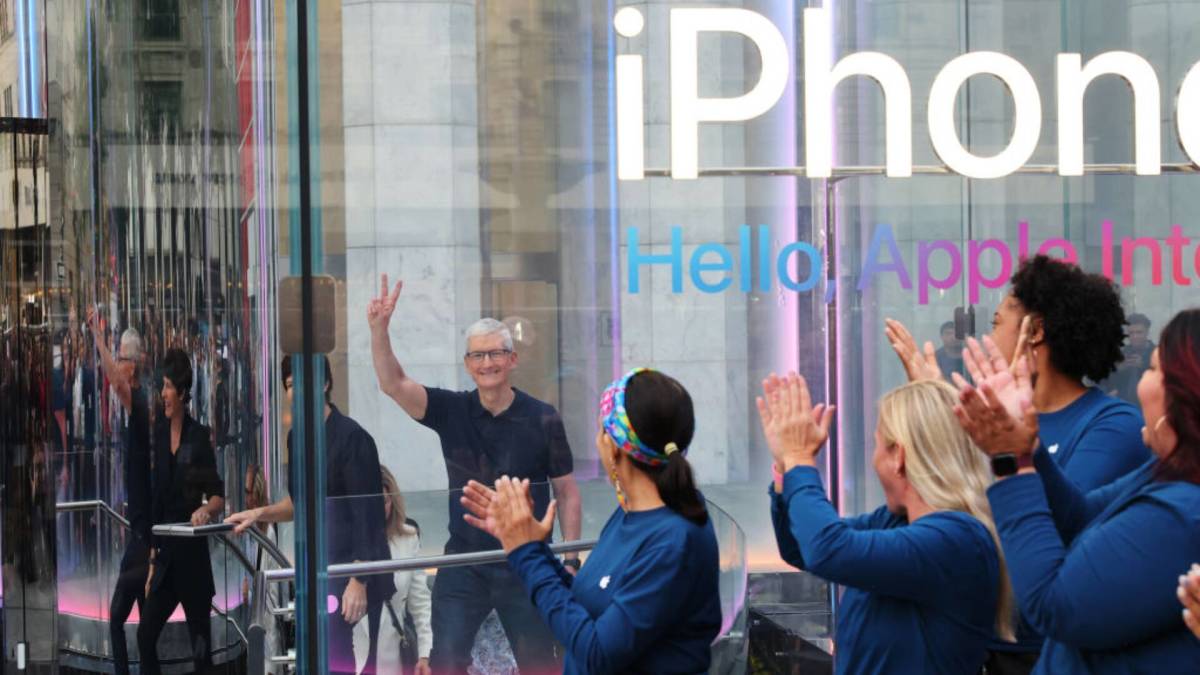When Ming-Chi Kuo speaks, Apple’s (AAPL) supply chain listens — and Wall Street takes notes.
The tech world’s most plugged-in Apple analyst now says a little-known Taiwanese supplier may have just landed one of the biggest hardware wins of the decade.
General Interface Solution (GIS) is the name of the business that is said to be the only partner for two big projects: backend processing for Apple’s foldable iPhone and iPad, and Pancake lenses for the forthcoming Vision Air headgear.
This is Apple’s biggest hardware change since the iPhone X. Going foldable implies new risks, new materials, and new ways to move things around in the supply chain. GIS is now at the core of it all.
Kuo claims that Apple will sell up to 10 million foldable iPhones in 2026 and 25 million in 2027. Vision Air is predicted to sell more than twice as many as Vision Pro, but it will be lighter and cost more than half as much.
If those figures stay the same, Apple won’t just have a hit; it’ll have a whole new category, and GIS will be positioned at the center.

Image source: Santiago/Getty Images
Apple’s foldable roadmap gets real — and GIS is right in the middle
Apple is finally going foldable, and it is not dabbling.
Ming-Chi Kuo believes the business plans to release a foldable iPhone in 2026 and a foldable iPad in 2028. Both will employ ultra-thin glass, which is a high-tech, expensive material that is easy to break and has tiny particles.
That’s why Apple used GIS. The Taiwanese business will handle all backend UTG processing, such as cutting, smoothing edges, inspecting, and preparing the foldables to see whether they function. It’s a really hard task, and GIS is one of the few companies with the track record that Apple needs.
What about the size? Bigger than previously imagined. Apple now thinks it will sell up to 10 million foldable iPhones in 2026, then 25 million in 2027. The foldable iPad will take up less space, but each will cost more.
Related: Top investor urges PepsiCo to break up bottling business, spark turnaround
Apple is doing what it does best by getting GIS in the game early: building a private moat around a product that it thinks will change the market.
Apple isn’t just slimming down the headset — it’s rewriting the supply chain behind it.
The Vision Air, which will come out in 2027, will be more than 40% lighter and more than 50% cheaper than the current Vision Pro. Apple’s most public attempt to make mixed reality more common so far, and it hopes GIS will play a significant role in that.
Kuo said that GIS has the exclusive agreement to make Pancake lenses for the Vision Air, taking over from Apple’s current supplier. It will also keep doing lamination, giving it vertical control over two of the headset’s most fragile parts.
That affects margins. Vision Pro was large, expensive, and took a long time to ship. Vision Air is built to grow, and Apple’s GIS system serves two purposes: the company gets better unit economics, fewer moving parts, and closer integration.
Related: Inside Google’s Quiet Rebuild: Changes Outpace AI Hype
If the forecasts are right, Vision Air might sell more than 1 million units in its first year, more than twice as many as the Vision Pro has sold throughout its lifespan. That is a major difference, and it suggests that Apple sees this product as a way to develop a new category rather than a halo gadget.
Plenty of gas in the tank
Apple can afford to make these moves because in Q2 2025, much like in previous quarters, it exceeded expectations yet again, raking in $95.4 billion in revenue, up 5% from last year, with earnings per share climbing 8% to $1.65.
Flexing its financial muscle, the tech giant distributed $29 billion to shareholders, meaning there is plenty of room for experimentation regarding foldables and augmented reality.
GIS, the supplier suddenly in Apple’s spotlight, is also an interesting case study. After uncertain times, it is again showing signs of life. It made NT$19 billion in sales and a little profit of NT$42 million in the second quarter, which was a big change from its loss in the first quarter. Kuo says Apple’s orders might contribute NT$1.5–2 to GIS’s EPS in 2026 and NT$5–6 by 2028.
Apple’s own estimates reveal an even broader picture. The foldable iPhone is estimated to ship up to ten million devices in 2026 and up to twenty-five million in 2027. Vision Air might sell 1 million units in its first year, more than double Vision Pro’s lifetime sales, while being lighter and more than 50% cheaper.
Related: Jensen Huang Isn’t Sweating Nvidia’s Slowdown For This $4 Trillion Reason
The message is clear: Apple is utilizing its financial might to launch new categories at scale while simplifying its supply chain. And if the stats pan out, GIS will move from an underappreciated player to Apple’s silent ace, riding shotgun on one of the most significant product transitions in years. Ultimately, it will all benefit stockholders.
#Top #Apple #analyst #reveals #exclusive #supplier #foldable #iPhone #Vision #Air #billion #pivot